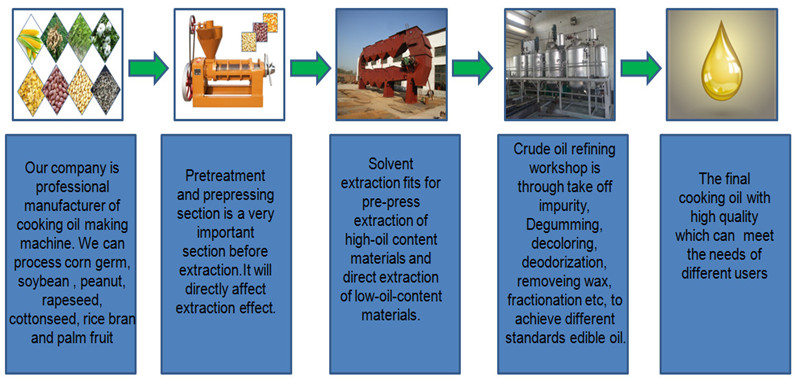
Factors affecting the deodorization of palm oil:
(1) Temperature
1. As the temperature rises, the vapor pressure of free fatty acids and odor components will increase accordingly.
2. When the distillation temperature is increased from 177℃ to 204℃, the vaporization rate of free fatty acids can be increased by 3 times, and when the temperature is increased to 232℃, it can be increased by 3 times.
3. Too high temperature will cause grease decomposition, conjugation, and trans acid, which will affect the stability of the product and increase the loss of grease. Generally 230-270°C.
(2) Operating pressure
1. When the pressure is reduced, the boiling points of fatty acids and odor components are also reduced accordingly;
2. The operating pressure decreases and the consumption of stripping steam decreases accordingly;
3. The pressure is low and the deodorization time is shortened.
4. The high vacuum degree can reasonably avoid the distillation loss caused by the oil hydrolysis.
5. Deodorization pressure is generally 0.27-0.40KPa (1-3mmHg).
(3) Ventilation rate and time
1. The increase of the steam flow rate increases the vaporization efficiency, but prevents the splashing of grease.
2. There must be enough steam to pass through the grease.
3. The amount of steam increases as the content of odorous components in the oil decreases.
4. Deodorization time is required.
Intermittent deodorization for 3-8 hours,
Deodorize continuously for 15 to 120 minutes.
5. Direct steam consumption;
Intermittent deacidification and deodorization, the amount of steam stripping is generally 5% to 15% of the oil weight; continuous and semi-continuous type is 4.5%.
(4) Quality of oil to be deodorized and refined oil
Good degumming, adsorption decolorization, high physical deacidification process requirements; J-degree rancid grease, gel impurities, pigments, and grease with high trace metal content are difficult to refine into high-quality grease; before deodorization, perform deoxidation and gassing (vacuum degree and Deodorization is the same, the temperature is below 70℃).
(5) Direct steam quality
Dry and deoxygenate steam and boiler feed water for deoxygenation. Strict steam and water separation is required before entering the tower.
(6) Structure of deodorization equipment
Shallow oil layer (200mm~250mm), thin film oil layer; anti-splash, anti-distillate backflow; stainless steel material;
The equipment, pipes, valves, and pumps of the deodorization system are strictly sealed to avoid the reduction of vacuum and oxidation of grease.
(7) Operating conditions of deodorization system
1. Vacuum system operation
(1) Reasonable selection of vacuum pumps required for vacuum degree, extraction steam volume, steam supply pressure, etc.
(2) The amount and pressure of power steam are stable; the temperature of condensate is low.
(3) Reasonable operation-set up a check valve; before the vacuum device terminates the operation, to ensure safe operation (otherwise, the condensate will be sucked back).
2. Fatty acid capture
The deodorized distillate should be recovered as much as possible, and the fatty acid circulation temperature is about 60°C.
3. Heat recovery
The temperature of the deodorized product oil is 240℃, and it can be exchanged twice for hot and cold oil.
4. Cooling and filtering
The oil temperature drops below 40°C, and it is safely filtered, and antioxidants are added to the finished oil in time. Add a 5% concentration of citric acid aqueous solution according to the amount of oil 0.01-0.02%.
Copyright © Henan Zhongxing Grain And Oil Machinery Co.,Ltd. All Rights Reserved. Powered by MetInfo